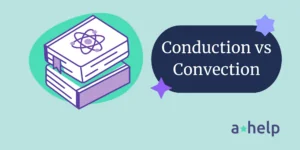Elastic potential energy is a form of energy that is stored in elastic materials when they are deformed by an external force. It’s a concept that permeates through various facets of physics, engineering, and even daily life. From the simple act of stretching a rubber band to the complex dynamics of building earthquake-resistant structures, understanding elastic potential energy is key to grasping how materials respond to forces.

✅ AI Essay Writer ✅ AI Detector ✅ Plagchecker ✅ Paraphraser
✅ Summarizer ✅ Citation Generator
Understanding Elastic Potential Energy
Elastic potential energy is fundamentally the energy stored when an object is deformed, such as stretching, compressing, or twisting. It is directly related to the force applied and the displacement caused by that force. To delve deeper, let’s consider the workings of an ideal spring, a model often used to explain basic principles.
The Role of Hooke’s Law
The behavior of elastic potential energy in an ideal spring is described by Hooke’s law. This fundamental principle states that the force exerted by a spring is directly proportional to its displacement – in other words, double the stretch, double the force. The equation F = -kx encapsulates this relationship, where F stands for force, k is the spring constant indicating the stiffness of the spring, and x is the displacement from its equilibrium position.
Characteristics of Ideal Springs
- Spring Constant (k): This value is unique to each spring, representing its stiffness.
- Displacement (x): The distance the spring is stretched or compressed from its natural length.
- Elastic Limit: The maximum extent to which a spring can be deformed without being permanently distorted.
Elastic Materials and Their Properties
Elastic materials are not limited to the academic ideal spring. In reality, they encompass a wide range of substances, from rubber bands to flexible plastics. Each of these materials has a unique stress vs strain curve, which graphically represents how they deform under various loads.
Common Elastic Materials
- Rubber Bands: Known for their high elasticity, they can be stretched to several times their original length.
- Coil Springs: Used in machinery like wind-up clocks, these store significant energy density.
- Flexible Plastics: Often found in everyday items, these materials return to their original shape after bending.
The Stress vs Strain Curve
This curve is pivotal in understanding the behavior of elastic materials under stress. Initially, the curve represents a linear relationship where the material behaves according to Hooke’s law. However, beyond the elastic limit, materials may not return to their original shape, entering the realm of plastic deformation.
Applications of Elastic Potential Energy
The concept of elastic potential energy isn’t just an academic one; it finds applications in numerous practical situations.
Everyday Objects Harnessing Elastic Potential Energy
- Wind-Up Clocks: The coil spring in a wind-up clock stores elastic potential energy, which is gradually released to power the clock’s hands.
- Archer’s Bow: Drawing the bow stores elastic potential energy in the bow’s limbs, which is then transferred to the arrow upon release.
- Bouncy Balls: When compressed against a surface, a bouncy ball stores elastic potential energy that propels it upward when released.
Force vs Displacement in Practical Design
In the design of springs and other elastic components, engineers often reference a force vs displacement graph. This helps in calculating the work done (area under the graph) and ensures that the component operates within the desired range of elasticity.
Measuring Elastic Potential Energy
To quantify elastic potential energy, we use the equation:

PEelastic is the elastic potential energy, k is the spring constant, and x is the displacement. This equation illustrates that the energy stored is proportional to the square of the displacement, meaning a small increase in stretch or compression can lead to a significant increase in stored energy.
Factors Affecting Elastic Potential Energy
- Material Composition: Determines the elastic limit and the spring constant.
- Shape and Structure: Coiled springs versus straight springs will have different energy storage capabilities.
- Temperature: Can affect the elasticity and, therefore, the potential energy stored.
Challenges and Considerations
While harnessing elastic potential energy can be beneficial in many designs and products, there are limitations and challenges to consider.
Understanding Elastic Limits
Materials can only store so much potential energy before reaching their elastic limit. Beyond this point, they may not return to their original shape, leading to failure in applications like springs in mechanical systems or structural supports.
Energy Density
The energy density of a material is a measure of how much energy it can store per unit volume. Materials with high energy density, such as the springs in a wind-up clock, can store more energy in a smaller space, which is essential for efficient design and functionality.
In Conclusion
Elastic potential energy plays a crucial role in our understanding of how materials respond to forces. Whether it’s in natural phenomena or engineered systems, the ability to store and release energy through deformation is a cornerstone of material science. As we continue to innovate and design new products, the principles of elastic potential energy will undoubtedly play a pivotal role in the evolution of technology and industry.
FAQ
Follow us on Reddit for more insights and updates.





Comments (0)
Welcome to A*Help comments!
We’re all about debate and discussion at A*Help.
We value the diverse opinions of users, so you may find points of view that you don’t agree with. And that’s cool. However, there are certain things we’re not OK with: attempts to manipulate our data in any way, for example, or the posting of discriminative, offensive, hateful, or disparaging material.